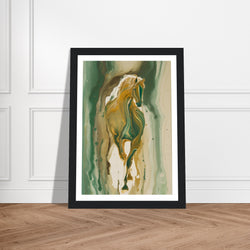Collage art is a unique form of artistic expression that emerged in the early 20th century and has since captivated audiences with its innovative and imaginative compositions. It involves combining various materials, such as photographs, newspaper clippings, fabric, and found objects, to create a cohesive visual narrative. This article will take you on a journey through the history of collage art, exploring its origins, prominent artists, and lasting impact.
Origins of Collage Art
The origins of collage art can be traced back to the early 20th century, when artists began to experiment with unconventional materials and techniques. One of the pioneers of collage art was Pablo Picasso, who started incorporating pieces of newspaper and other found objects into his paintings in the early 1900s. Picasso's groundbreaking work paved the way for future artists to explore the possibilities of collage as a form of artistic expression.
The Dada Movement
The Dada movement, which emerged during World War I, played a significant role in the development of collage art. Dada artists sought to challenge traditional artistic conventions and embrace the absurd and nonsensical. Collage became a prominent medium for Dadaists to juxtapose disparate objects and images, creating a sense of chaos and disruption. Artists such as Hans Arp, Hannah Höch, and Kurt Schwitters utilized collage techniques to create powerful and thought-provoking works that reflected the fragmented and chaotic nature of their time.
Surrealism and Collage
Collage art continued to evolve in the 1920s and 1930s with the rise of the Surrealist movement. Surrealists sought to explore the depths of the unconscious mind and embrace the irrational and dreamlike. Surrealist artists like Max Ernst and René Magritte used collage to create bizarre and otherworldly compositions. They often combined unrelated objects and images to evoke a sense of mystery and uncertainty, inviting viewers to interpret their work in their own unique way.

The Pop Art Movement
In the 1950s and 1960s, collage art took on a new direction with the emergence of the Pop Art movement. Pop artists such as Richard Hamilton and Robert Rauschenberg incorporated popular imagery from mass media and consumer culture into their collages. They used familiar images, advertisements, and everyday objects to critique and comment on the social and political landscape of the time. Pop art collages were often vibrant and visually striking, capturing the energy and excitement of the post-war era.
Contemporary Collage Art
Today, collage art continues to thrive as a versatile and dynamic form of artistic expression. Contemporary artists like Kara Walker, Romare Bearden, and Peter Blake push the boundaries of collage, incorporating digital techniques and exploring new materials and themes. Collage is often used as a means of storytelling, allowing artists to piece together fragmented narratives and explore complex ideas.
The Lasting Impact of Collage Art
Collage art has had a lasting impact on the art world, inspiring generations of artists and challenging traditional notions of artistic practice. It has opened up new possibilities for creativity and self-expression, showcasing the power of bringing together disparate elements to create something new and unexpected. Collage continues to evolve and adapt to the ever-changing artistic landscape, reminding us of the importance of embracing experimentation and pushing the boundaries of artistic conventions.
The history of collage art is a testament to the power of innovation and imagination. From its origins in the early 20th century to its continued relevance in contemporary art, collage has captivated audiences with its ability to tell compelling visual stories. Whether it's the chaotic compositions of the Dadaists, the dreamlike imagery of the Surrealists, or the bold statements of the Pop artists, collage art continues to push the boundaries of artistic expression and challenge our perceptions of what is possible.







